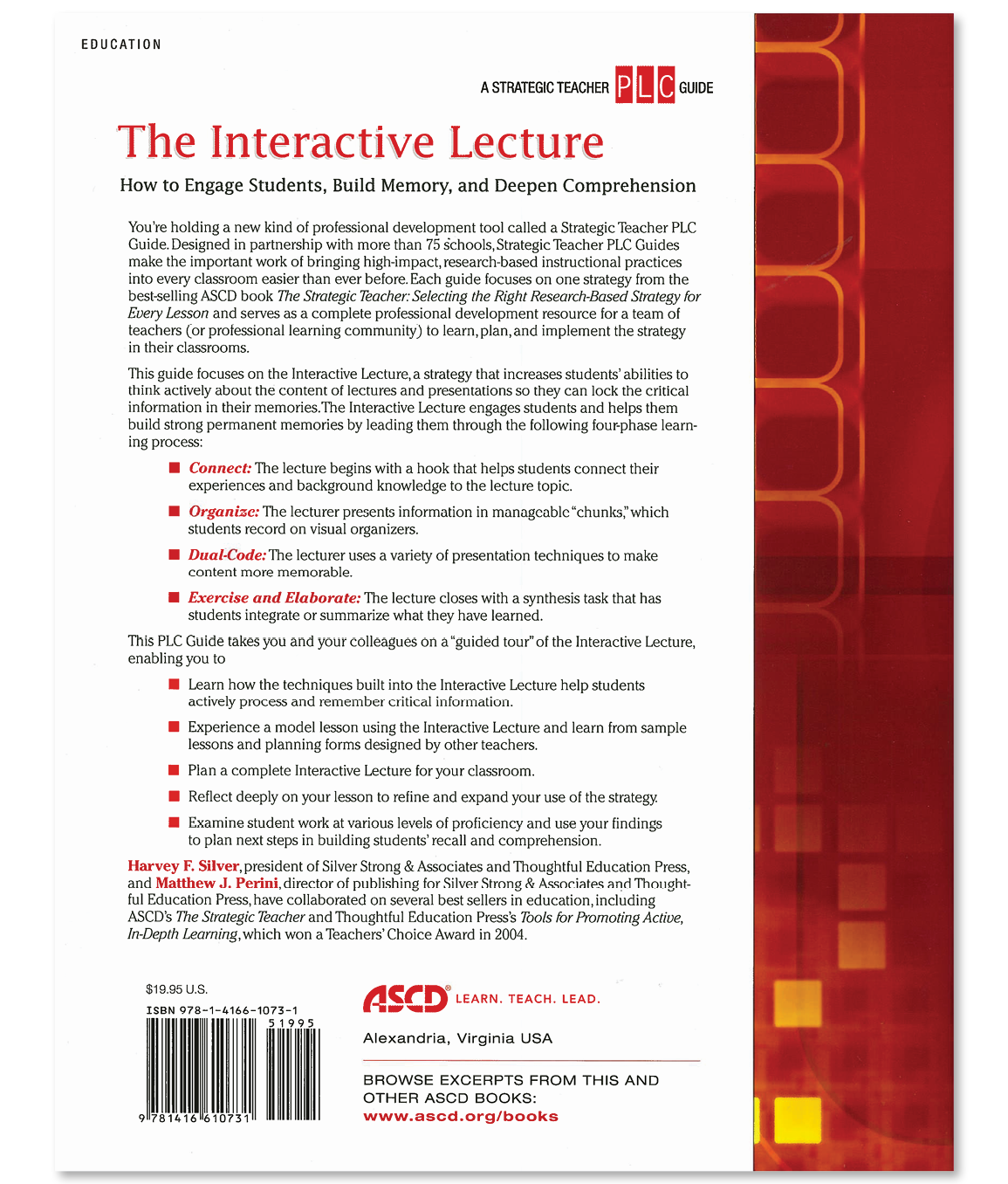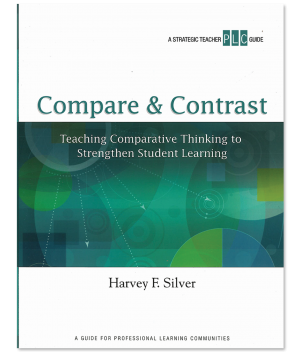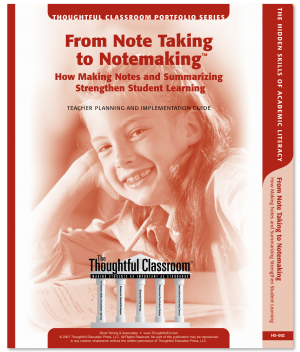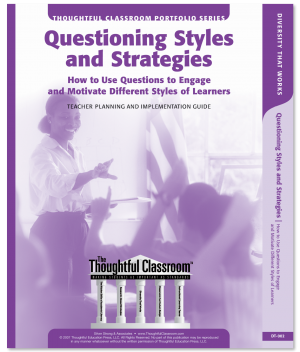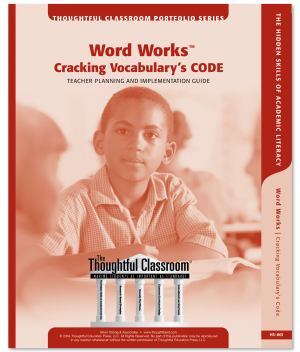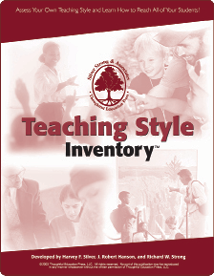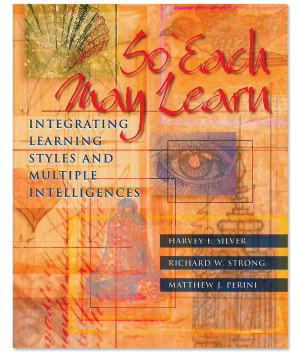The Interactive Lecture: How to Engage Students, Build Memory, and Deepen Comprehension
$19.95
By Harvey F. Silver, Matthew J. Perini
Published by ASCD
Accelerate student learning by making your classroom presentations more meaningful and memorable.
Foreword by Robert J. Marzano
This best-selling book features 20 of the most reliable research-based and classroom-proven strategies for teachers of all subjects and grade levels. To ensure that classroom implementation is easy and effective, each strategy contains
- A brief introduction to the strategy.
- An example of a teacher using the strategy in the classroom.
- The research base supporting the strategy and how it benefits students.
- A list of clear implementation steps.
- Guidance through the planning process.
Additional tools, variations, and resources for adapting and expanding the use of the strategy.
Additional information
| Weight | 0.75 lbs |
|---|---|
| Dimensions | 8.5 × 11 in |
| Poster Size | 20.0" × 32.0" |
| Edition | First |
| First Publication Date | July 2010 |
| Publisher | ASCD |
| Copyright | © 2010 Silver Strong & Associates |
| Pages | 82 |
| ISBN | 978-1-4166-1073-1 |
| Item No: | STPINT1 |
You may also like…
This PLC Guide focuses on the Interactive Lecture, a strategy that increases students’ abilities to think actively about the content of lectures and presentations so they can lock the critical information in their memories. The Interactive Lecture engages students and helps them build strong permanent memories by leading them through the following four-phase learning process:
- Connect: The lecture begins with a hook that helps students connect their experiences and background knowledge to the lecture topic.
- Organize: The lecturer presents information in manageable “chunks,” which students record on visual organizers.
- Dual-Code: The lecturer uses a variety of presentation techniques to make content more memorable.
- Exercise and Elaborate: The lecture closes with a synthesis task that has students integrate or summarize what they have learned.


